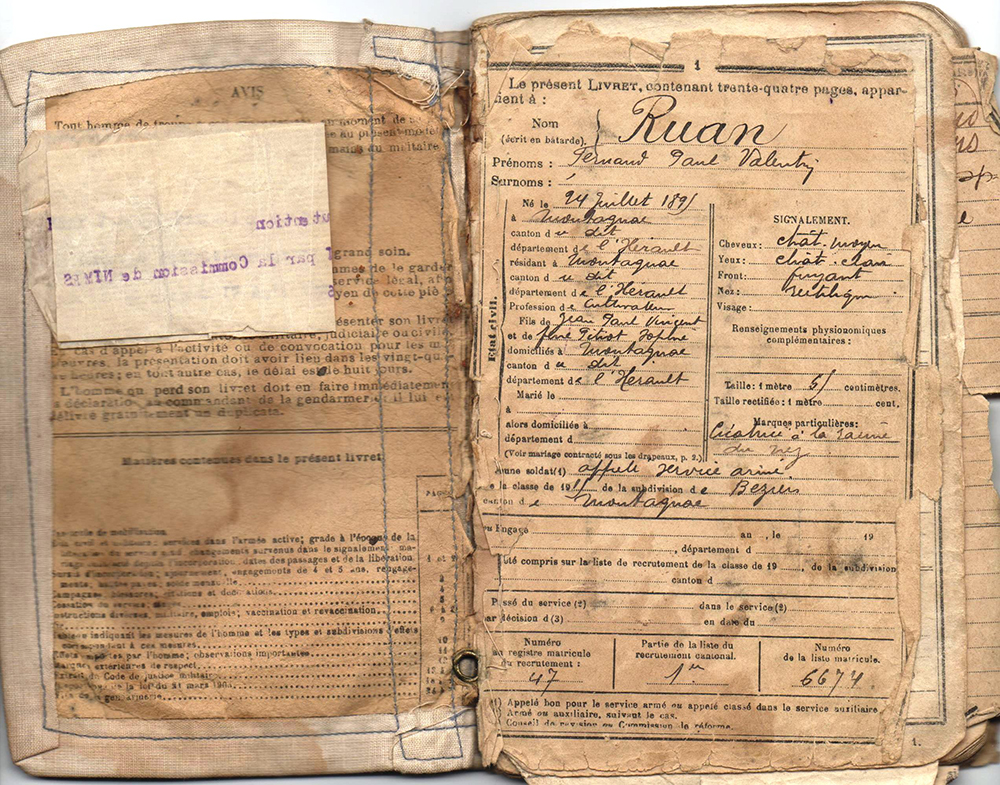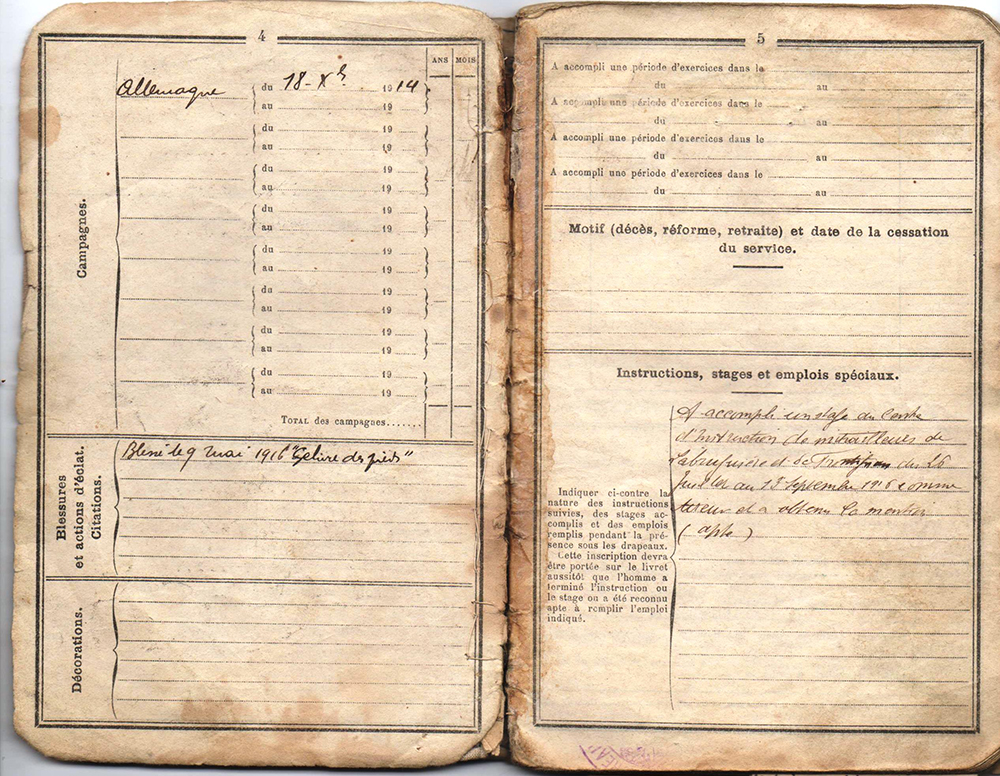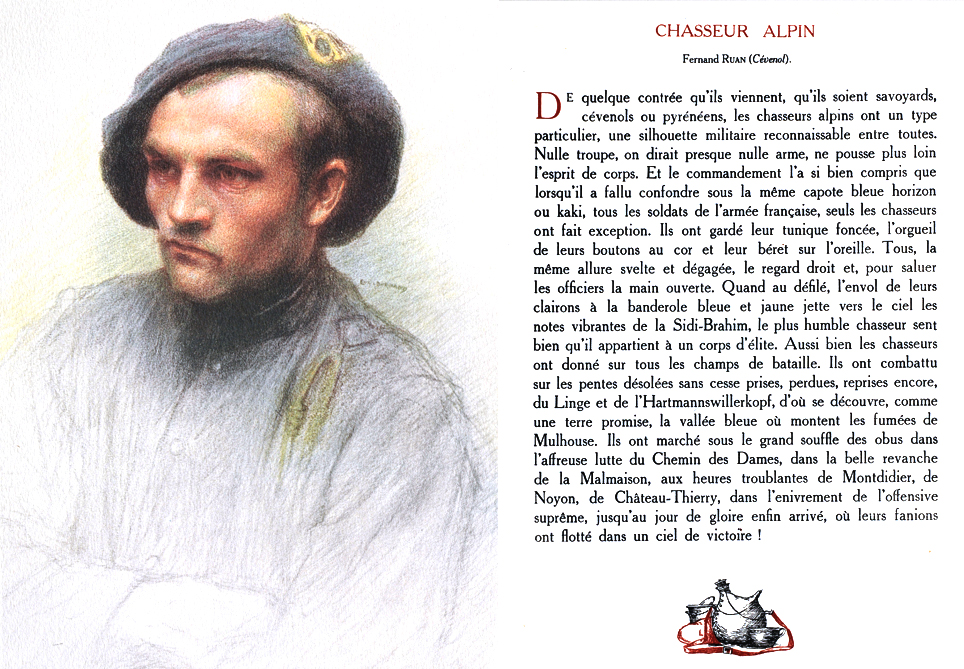Next in sequence Previous in sequence Home Pastel index
Chasseur Alpin (Fernand Ruan, Cévenol)
Whichever region they come from, whether Savoie, the Cevennes or the Pyrenees, the alpine infantry are a particular type, their military silhouettes recognisable amongst all others. No troops, or one could almost say no branch of the service, could surpass their esprit de corps, their comradely spirit. The military command understood this so well that while it was necessary to mingle the khaki and the sky-blue of all the soldiers of the French army under the same greatcoat, the alpine infantry were the only exception. They kept their dark tunics, the pride in their horn buttons, and their beret over one ear. They retained their smooth and easy pace, their direct look and their open handed salute for senior officers. When on parade, the clarion call of their bugles with their blue and yellow pennants throws to the skies the vibrant notes of Sidi-Brahim (see in Wikipedia), and the most lowly alpine infantryman understands well that he is part of an elite corps.
The alpine infantry have also looked upon every field of battle. They have fought on desolate slopes endlessly taken, lost and taken again; those of Linge and Hartsmannwillerkopf, from where like a promised land was revealed the blue valley from which rose the smoke of Mulhouse. They have marched under the great blast of shells in the frightful struggle of the Chemin des Dames (see in Wikipedia), under the fire of the revenge attack of Malmaison, the anxious hours of Montdidier, Noyon, Chateau-Thierry, and in the intoxication of the greatest offensive, until the day of glory at last arrived and their fanfares floated up into the skies of victory!
Postscript
I was contacted in late 2014 by the great, great granddaughter of Fernand Ruan after she did a Google search on his name, knowing the family story that he had been painted by a famous artist during his convalescence in WW1, but believing it to be unfindable as no family member knew any detail. She was of course thrilled when the picture came up number one!
I continued my information search with the help of her mother, his great granddaughter 'D', who knew him well as she was 10 years old when he died. She told a moving story:
Fernand Ruan est mon arrière grand père par alliance car il s'est marié avec mon arrière grand mère alors qu'elle était déjà maman d'une fille (ma grand mère) et il l'a élevé et aimé comme sa propre fille. Au cours de la deuxième guerre mondiale ma grand mère et mon grand père qui était cheminot (mécanicien de trains) habitait à La Seyne-sur-mer en face de Toulon.
Comme il y avait tous les bateaux de guerre ma grand mère a demandé à Fernand et sa femme qui habitait à Nimes, de garder leur seul enfant près d'eux, ma maman.
Malheureusement un bonbardement américain a tuer ma grand mère et mon grand père a confié ma maman la plupart du temps à mes arrières grand parents.
'D' 's great grandmother
married Fernand although she already had a child and he raised and loved her as his own. This child, 'D' 's grandmother later lived close to the port of Toulons during WW2 where her husband worked as a train mechanic and because it was dangerous she asked Fernand and his wife to look after their daughter ('D' 's mother) in safer Nimes. Her fears were all too well founded as she was later killed in an American bombardment and 'D' 's mother remained most of the time with Fernand. So Fernand was like a father to her.
Here are some pictures.
Fernand Ruan (1891-1981) in 1973 with 'D', his great granddaughter
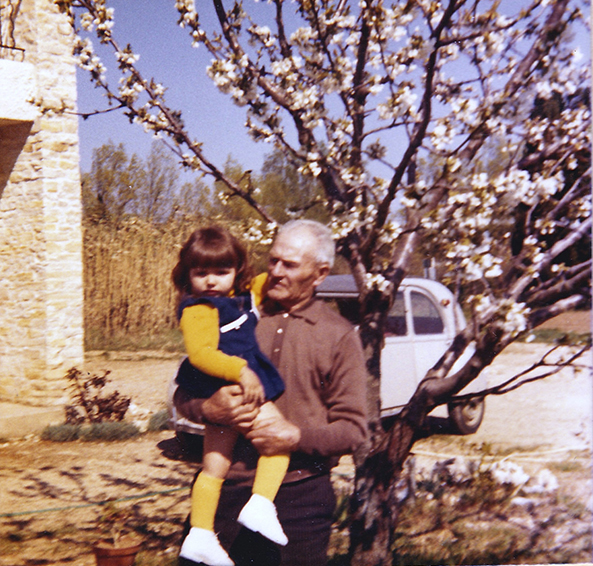
Fernand Ruan on far right at a grand-niece's wedding in 1973.
His grand-daughter is at his side ('D' 's mother), with 'D' between them.
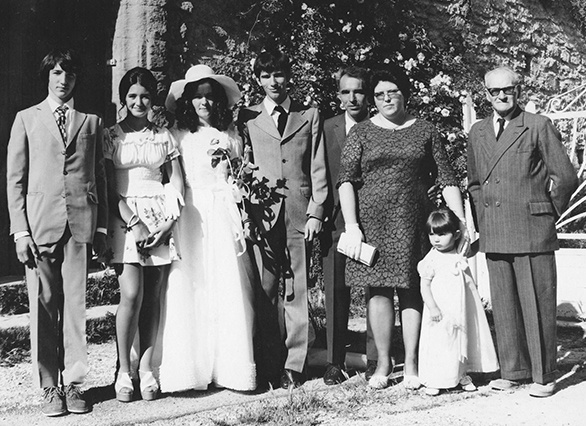
Fernand Ruan with his wife, grandson-in-law and 3 great grandsons in 1967.
'D' 's mother must be taking the picture, and 'D' herself did not pop along for another 4 years!
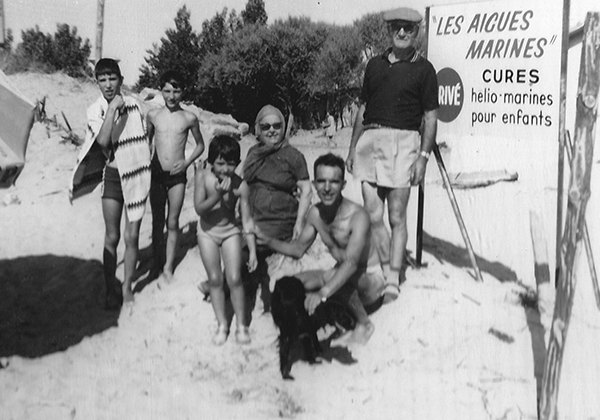
This recent picture is of 'D' and her brother and two of her children seeing the book of 100 portraits for the first time.
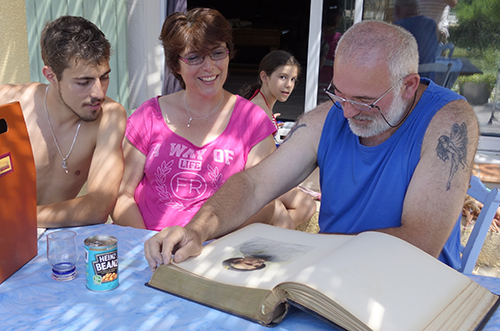
Here are pages from his Army Book showing he was wounded in 1916
